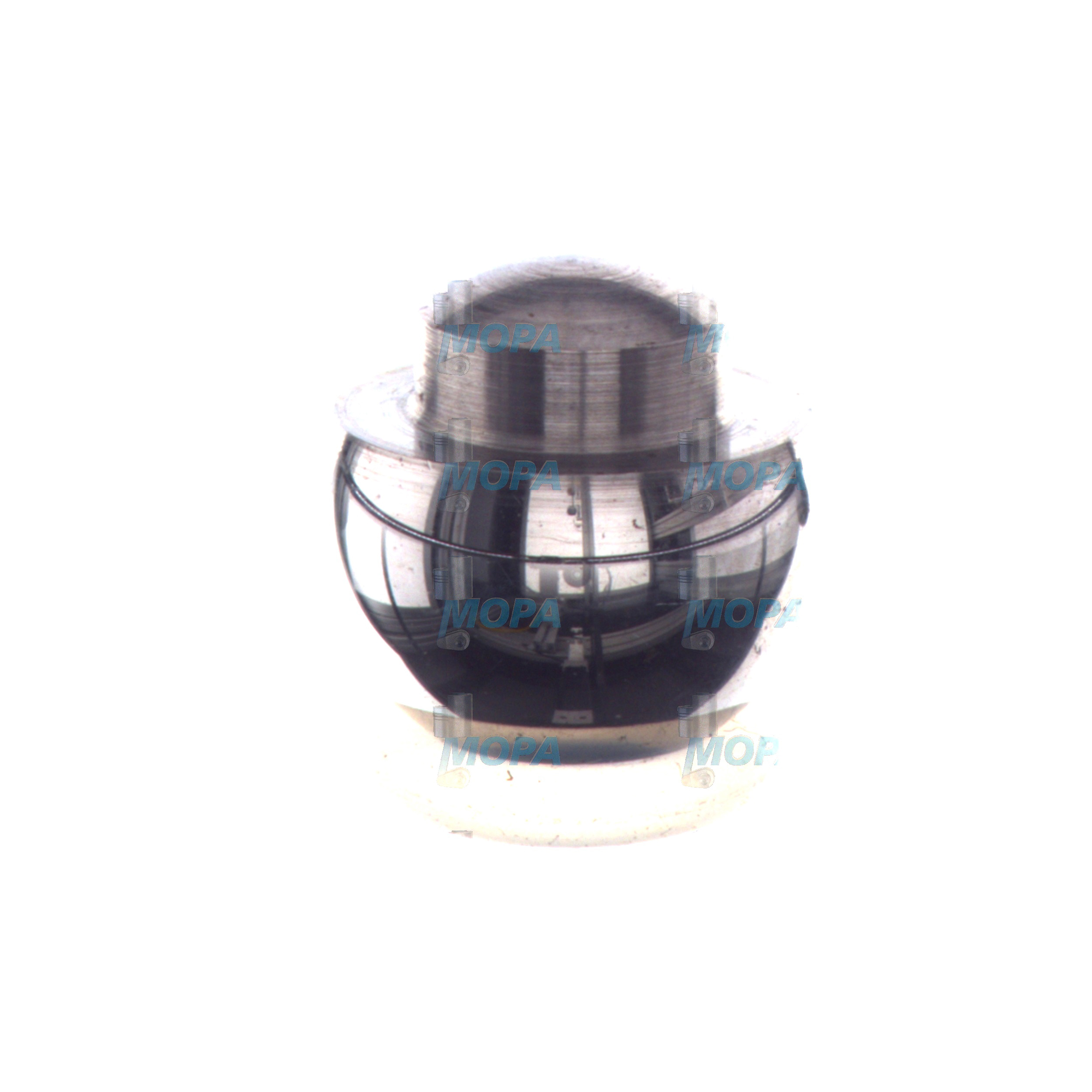BALL Bearings for Engines: Precision Components for Marine and Industrial Power
Bearings are precision-engineered components that support rotating and oscillating parts in an engine. Whether in a high-output marine engine, a compact genset, or large industrial machinery, bearings minimize friction, carry radial and axial loads, maintain alignment, and protect the most valuable assets in the drivetrain. The category includes rolling-element types such as ball and roller bearings, as well as plain (journal) bearings used for crankshafts and connecting rods. In every case, correct bearing selection and condition are decisive for efficiency, performance, and operational safety.
Technical function of Bearings in BALL diesel engine and marine engine systems
In engines, bearings perform three core tasks: load support, friction reduction, and guidance. Main and connecting-rod bearings (typically plain shells with tri-metal or bi-metal overlays) create a hydrodynamic oil film that separates surfaces under high load, enabling the crankshaft to rotate with minimal wear. Camshaft and balance shaft supports use similar principles, while auxiliary systems—alternators, pumps, blowers, gear drives, and, in some designs, turbochargers—commonly rely on rolling-element solutions such as ball bearings.
Ball bearings use hardened raceways and precision balls to convert sliding friction into rolling motion. Their internal geometry (contact angle, cage design, raceway curvature) determines their capability to carry radial and thrust loads at high speeds with low heat generation. In a BALL marine engine context, ball bearings are typically specified where predictable high-speed operation, compact envelopes, and low friction are priorities—for example in seawater pumps, lube oil pumps, auxiliaries, and electric machines. In a BALL diesel engine, rolling-element bearings stabilize accessory drives and reduce losses, contributing to lower fuel consumption and improved transient response.
Performance and safety depend on tight tolerances: surface finish of raceways and journals, correct internal clearance (e.g., CN, C3), precise fits (shaft and housing), and clean lubrication. For plain bearings, overlay materials and grooving patterns manage mixed and boundary lubrication regimes during starts, stops, and load peaks. For ball bearings, cage material, seal/shield configuration (e.g., 2RS, ZZ), and lubricant selection directly influence service intervals and resistance to contamination and corrosion.
- · High load capacity within compact dimensions.
- · Low friction for better fuel efficiency and cooler operation.
- · Precise tolerances for stable shaft alignment and vibration control.
- · Materials engineered for high temperature and corrosive environments.
- · Optimized lubrication paths for reliable film formation.
- · Configurations for radial, axial, or combined loads.
- · Proven performance in pumps, alternators, gear drives, and turbo systems.
Why Bearings—especially BALL bearings—are critical for reliability and service life
Bearings determine the health of an engine’s rotating assembly. When they operate within specified clearances and lubrication parameters, they protect shafts, reduce noise and vibration, and enable consistent power delivery. If a bearing degrades, minor friction losses can escalate into heat, metal-to-metal contact, and accelerated wear of journals and races. In severe cases, seizure or spalling can damage crankshafts or housings and result in unplanned downtime.
Common failure modes in BALL marine engine bearings
Contamination from water ingress or particulates abrades surfaces and disrupts the oil film. Misalignment from improper installation or housing distortion concentrates loads and causes edge loading. Insufficient lubrication leads to scuffing and surface distress; over-lubrication can raise temperatures and churn the lubricant. Electrical pitting in alternator bearings, corrosion in seawater environments, and fatigue from repeated load cycles manifest as flaking or micro-cracking. Proactively managing these risks—through specification, condition monitoring, and timely replacement—extends engine life and protects upstream and downstream components.
Advantages of OEM spare parts suitable for Bearings and BALL OEM parts
Selecting OEM spare parts suitable for Bearings ensures that geometry, materials, and heat treatment match the engine maker’s design envelope. That precision delivers consistent performance under real operating loads and temperatures. For rolling-element applications, BALL OEM parts provide the correct internal clearance, cage type, and sealing to handle speed, contamination levels, and lubricant chemistry. For plain bearings, OEM specifications secure the right overlay thickness, backing metallurgy, crush, and oil groove layout to maintain stable hydrodynamic films.
The result is predictable performance, fewer surprises during installation, and longer service intervals. Sourcing OEM spare parts suitable for Bearings directly supports budget and uptime goals by minimizing repeat work, avoiding collateral damage to shafts and housings, and aligning with maintenance plans. Traceable quality documentation and dimensional consistency reduce risk during overhauls and partial replacements across multi-engine fleets.
MOPA — your partner for OEM spare parts Bearings for diesel and gas engines
MOPA is an experienced and reliable partner for OEM spare parts Bearings across diesel and gas engine platforms. We focus on speed, quality, and security in the trade of OEM parts, combining fast response with rigorous sourcing to meet dockside schedules and tight overhaul windows. Whether you need main and conrod shells, camshaft bearings, or BALL OEM parts for pumps and alternators, MOPA helps you match specifications, confirm fit, and move from inquiry to delivery with confidence.
Our team supports purchasers and technical decision-makers with technical cross-references, documentation, and logistics solutions that fit the realities of ship operations and power generation. From single components to complete service kits, we provide the dependable supply chain your maintenance strategy requires.
Conclusion — BALL Bearings and OEM spare parts for dependable engine operation
Bearings are foundational to engine performance, efficiency, and safety, from plain shells in crankcases to BALL bearings in high-speed auxiliaries. Keeping them to specification and in top condition directly extends engine life and protects critical assets.
OEM spare parts suitable for Bearings deliver the dimensional accuracy and material integrity needed for reliable operation and optimized lifecycle costs. With MOPA as your partner, you secure fast, high-quality, and secure access to the right components for diesel and gas engines.






